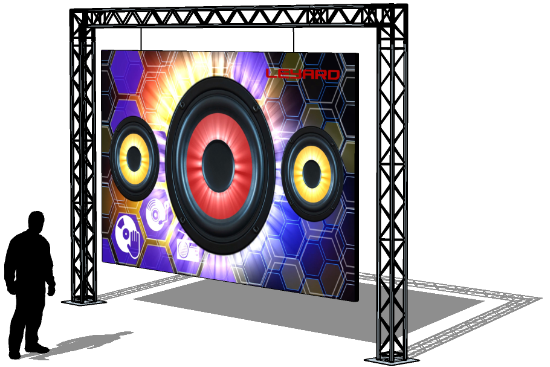Mastering the Art of Hue Adjustment for Breathtaking Imagery on LED Walls
Wiki Article
Color calibration is an crucial process for attaining breathtaking images on LED walls. LED walls are widely used in various environments, such as musical events, meetings, and promotional presentations. These screens consist of numerous tiny light-emitting diodes that create images and videos. However, if the colors are not calibrated correctly, the images can appear dull or distorted. Color calibration ensures that the colors displayed on the LED screen are precise and lively, improving the complete watching encounter.
The initial step in hue tuning is comprehending the hue spectrum. Hue space refers to the range of colors that can be displayed on a screen. Different devices, such as cameras and monitors, may use different color spectra. Common color spaces include sRGB, Adobe RGB, and DCI-P3. Understanding which hue spectrum the light-emitting diode screen uses is vital for proper calibration. This knowledge helps in modifying the hues to match the intended output, ensuring that the visuals look as they were meant to be seen.

Subsequently, using a color calibration tool is vital for obtaining precise results. These tools can be hardware devices or software tools designed to assess and modify hues. A color measurement device is a popular hardware device that measures the hues displayed on the LED wall. It provides information on how the hues look compared to the reference metrics. By using this data, modifications can be made to the LED wall settings, such as luminosity, contrast, and hue balance. This procedure helps in aligning the displayed colors with the intended color benchmarks.
Another important aspect of color calibration is ambient illumination consideration. The illumination in the surroundings where the light-emitting diode screen is located can significantly influence how colors are perceived. For instance, bright surrounding illumination can wash out hues, making them appear view publisher site less vibrant. Therefore, it is crucial to evaluate the lighting conditions before calibrating the LED screen. Modifications may need to be made to the screen's brightness and contrast settings to compensate for the ambient illumination. This guarantees that the hues stay bright and faithful to their desired look.
In conclusion, routine upkeep and re-tuning are essential to maintain the light-emitting diode screen performing at its optimal. Eventually, the hues on the light-emitting diode screen may deviate due to factors like aging parts or variations in the environment. Regularly scheduled tuning assist to maintain color precision and uniformity. It is also advantageous to maintain a log of tuning configurations and results. This documentation can assist in identifying trends or issues that may occur, enabling for prompt adjustments. By prioritizing hue tuning, operators can guarantee that their light-emitting diode screens deliver breathtaking images that engage viewers.